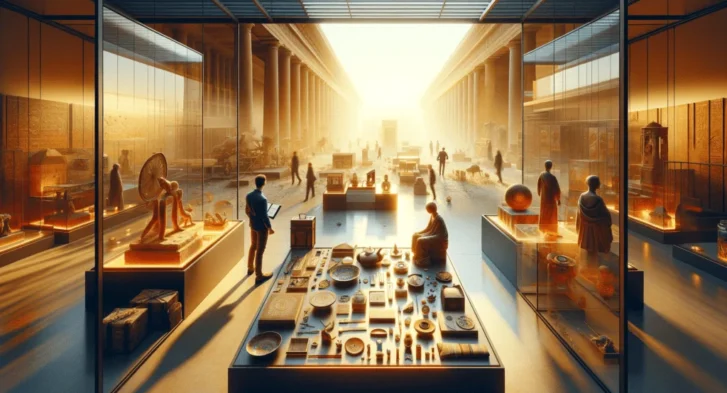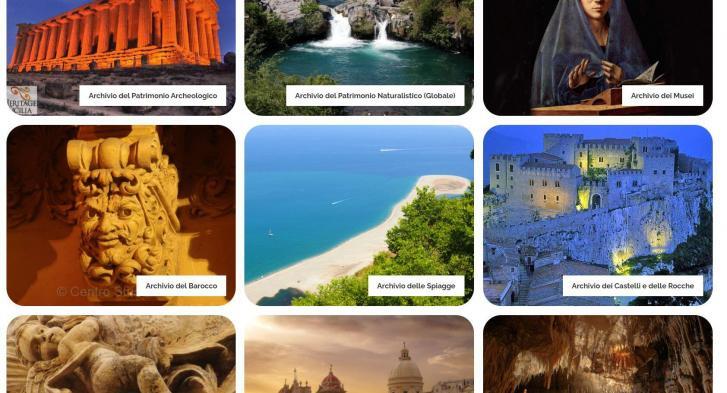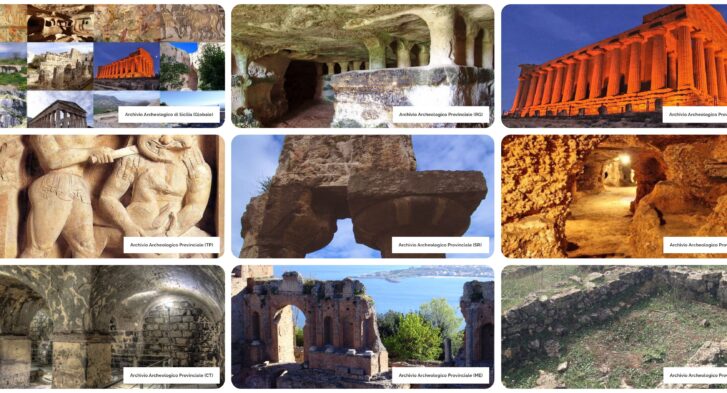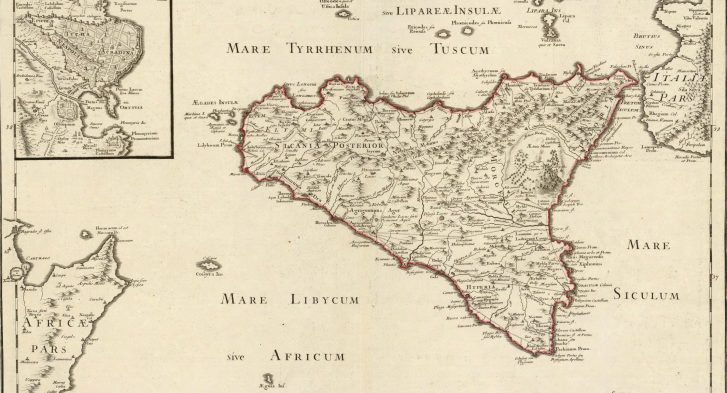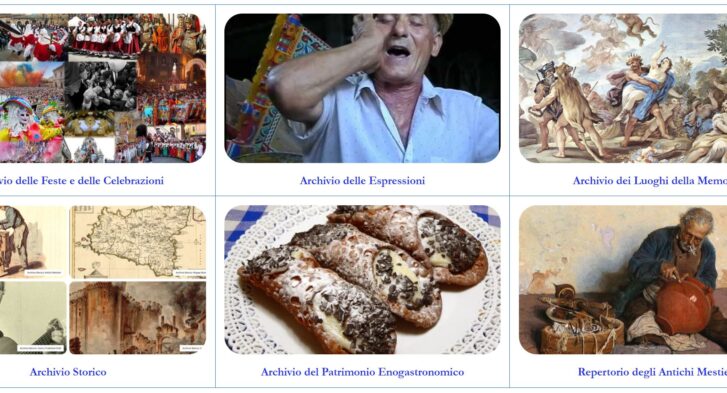Hephaestus (Vulcan)
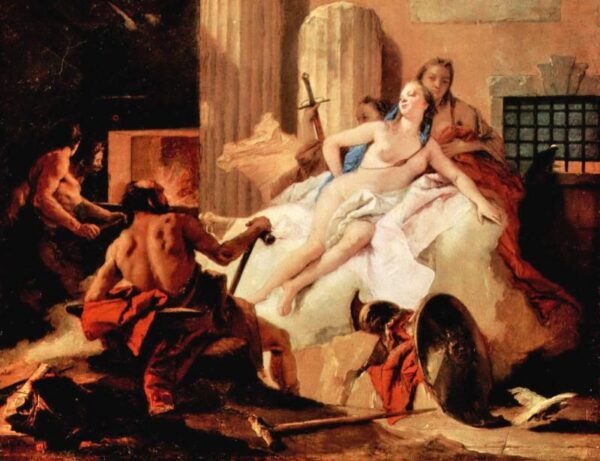
Gianbattista, Giambattista Tiepolo (Sketch for “Venus and Vulcan – 1765.66”)
Reference page: Repertory of Cults and Myths
Origins of the Myth
For the Greeks he is the god of fire and metals, a skilled blacksmith and protector of metallurgy, he was identified by the Romans with Vulcan. He is considered the son of It was need Zeus but, according to a tradition, Hera begat him alone out of envy of Zeus who had begotten Athena without the help of any woman.
Hephaestus is a god who, unlike the other divinities, cannot be considered beautiful, indeed he is, among the gods, the ugliest, as well as being lame.
There are several mythical explanations relating to his infirmity. One of the many tells that Hephaestus was lame from birth and that Hera, ashamed of his son, decided, in his great magnanimity, to get rid of him by throwing him from the top of Olympus [Pausanias Lib. I,20,3]. Poor Hephaestus fell into the ocean, but was picked up and saved by a marine deity named Teti and his daughter Eurynome. Growing up and becoming an expert inventor and blacksmith, he wanted to take revenge on his mother, so he built a golden throne, with chains that imprisoned anyone who sat on it, then sent it to his mother who, unaware of the spell, sat on it, thus remaining imprisoned . The only one who knew the secret to freeing the goddess was, of course, Hephaestus, who, despite having been recalled by the gods of Olympus to free Hera, refused, he could not forgive his mother for the gesture she had made at his birth . To convince him, Dionysus was sent who got him drunk and led him to Olympus riding a donkey. Here Hephaestus agreed to free his mother, but in exchange he demanded to marry Afrodite. The marriage between the ugliest of the gods and the most beautiful divinity of Olympus could certainly not be the happiest, in fact soon Aphrodite began a love affair, unbeknownst to her husband, with the most handsome Ares. Warned of the betrayal by the sun god Helios, who sees everything from above but doesn't mind his own business, Hephaestus prepared an invisible net and placed it on Aphrodite's bed. When Ares joined Aphrodite again, right at the climax, the net closed again, immobilizing the two lovers and preventing them from making any movement. Hephaestus summoned all the gods of Olympus, showing them the spectacle of the naked and trapped bodies of the two lovers and arousing great hilarity. As soon as she was freed, Aphrodite had no choice but to run away in shame.
Hephaestus prefers volcanoes, which he uses as workshops and has, as helpers, the Cyclops. Skilled weapons builder, it is to him that Teti turns to forge the weapons that will be used for Achilles.
The Myth in Sicily
In Sicily, the presence of Etna favored the introduction of the cult of Hephaestus by the first settlers, which was associated (and perhaps superimposed) on that of adrano, personification of the Etna volcano.
The discovery of coins with the figure of Hephaestus testifies to the cult a Mitistratus and Lipari [Emanuele Ciaceri: Cults and Myths of Ancient Sicily p. 153].
Ad Agrigento, in the famous valley of the temples, the remains of the temple of Vulcan from 440-430 BC are still visible. The Doric building was preceded by an archaic sacellum which is enclosed by the cell of the classical temple and can be dated to 556-550 BC
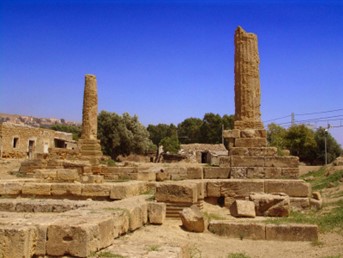
Agrigento: Remains of the Temple of Vulcan (Photo: Ignazio Caloggero)
A Caltanissetta, in the Archaeological museum, near the station, among the Attic ceramics of the kits of some Greek tombs of the VI and V century. BC, a red-figure crater stands out with the representation of Hephaestus' forge.
The cult of the god of volcanoes also had to exist Catania, as testified by an English traveller, Patrick Brydone, who happened to visit Catania in 1770. He told of having seen the ruins of a temple dedicated to Vulcan [Patrick Brydone: Viaggio in Sicilia e a Malta p. 83].
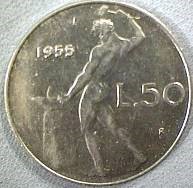
Hephaestus on the remainder of the 50 lire coin
The Myth in the IWB Register of the Sicily Region
The places of the myth of Hephaestus have been included in the regional map of places and identity and memory (Places of myth and legends).
Places indicated in the IWB register of the Sicily Region (Places of Identity and Memory):
- Vulcano Island
- Etna volcano
Extract from the Book ” Cults of Ancient Sicily” by Ignazio Caloggero ISBN: 9788832060102 © 2022 Centro Studi Helios srl


